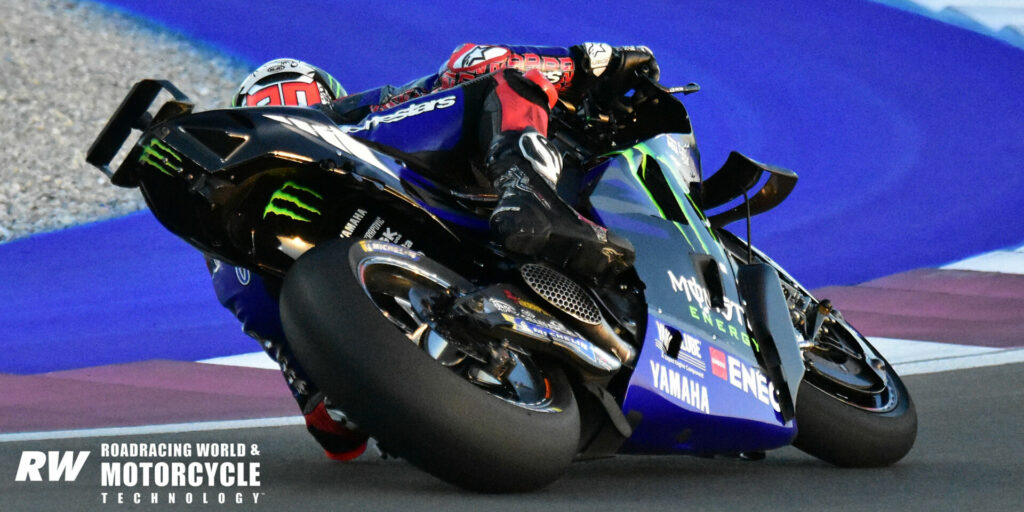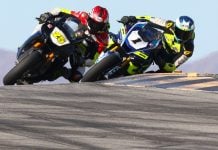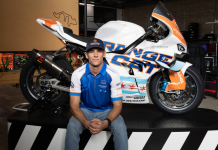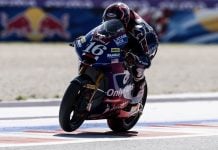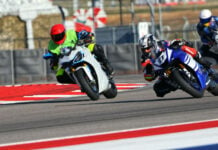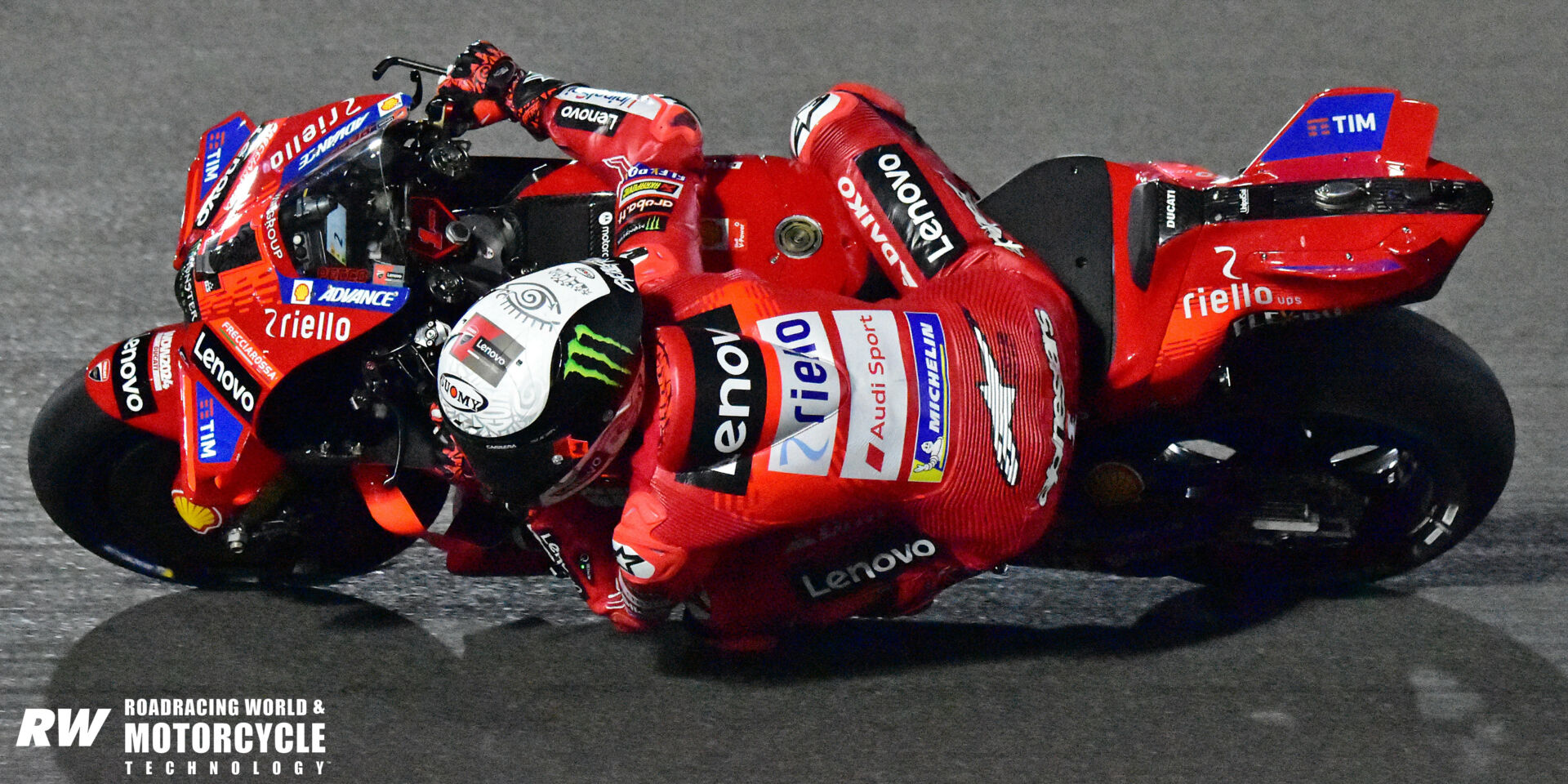Earlier this week, MotoGP teams and riders spent two nights at Qatar dialing in the final configurations of their racebikes ahead of the season-opening race, scheduled for two weeks at the same Lusail International Circuit.
There were more new pieces on display as the manufacturers continued to look for gains in aerodynamics, specifically with the aim of finding more grip under braking and in the turn-in and mid-corner phase.
At the end of the test, defending and two-time Champion Francesco Bagnaia looked relaxed as he talked to the media, saying that his blazing record-setting lap came with the very first soft tire the team tried during time attacks. The time was quick enough that the team didn’t go for another run on a second soft, choosing instead to use it for a long-distance run.
Aprilia continued with its “Batwing” tail section, designed to extract air from the area above the rear tire. Aerodynamically, that region is incredibly turbulent, so cleaning the airflow through there reduces drag, and that frees up power that can be used to push other aerodynamic devices through the air.
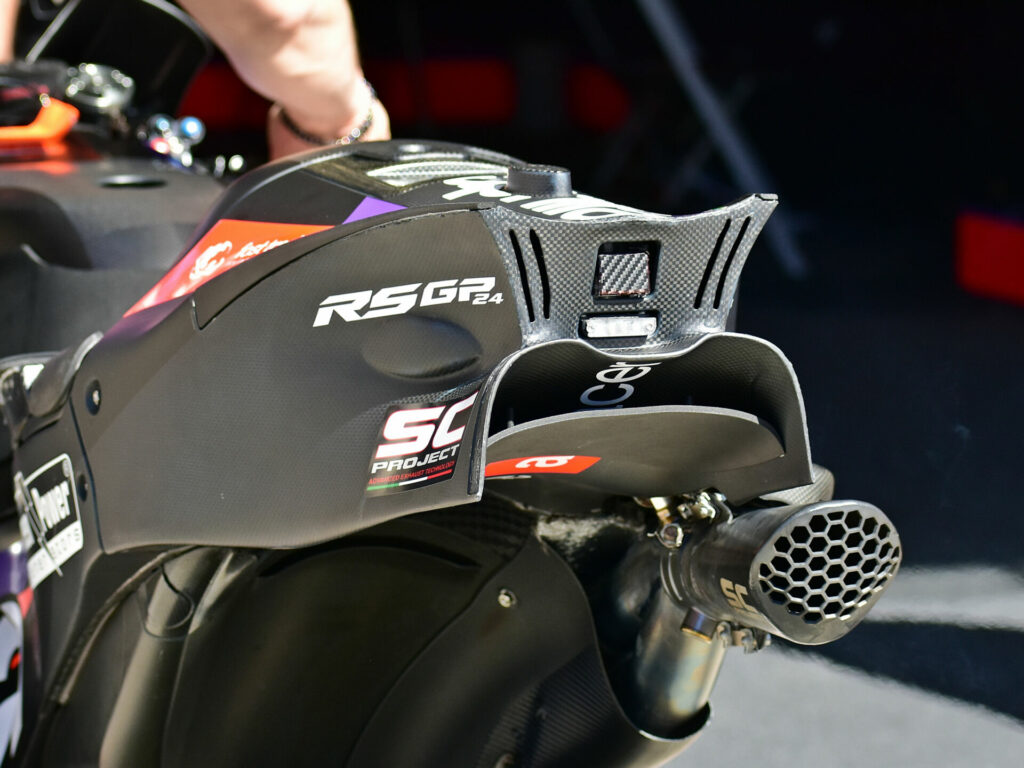
Aprilia also experimented with cleaning up the airflow around the rear tire with a cutaway rear fender and continuing with its wraparound front fender. A CFD analysis of a road racing motorcycle reveals a surprising amount of turbulence from the front axle nuts, so Aprilia’s fender shrouds that hardware completely.
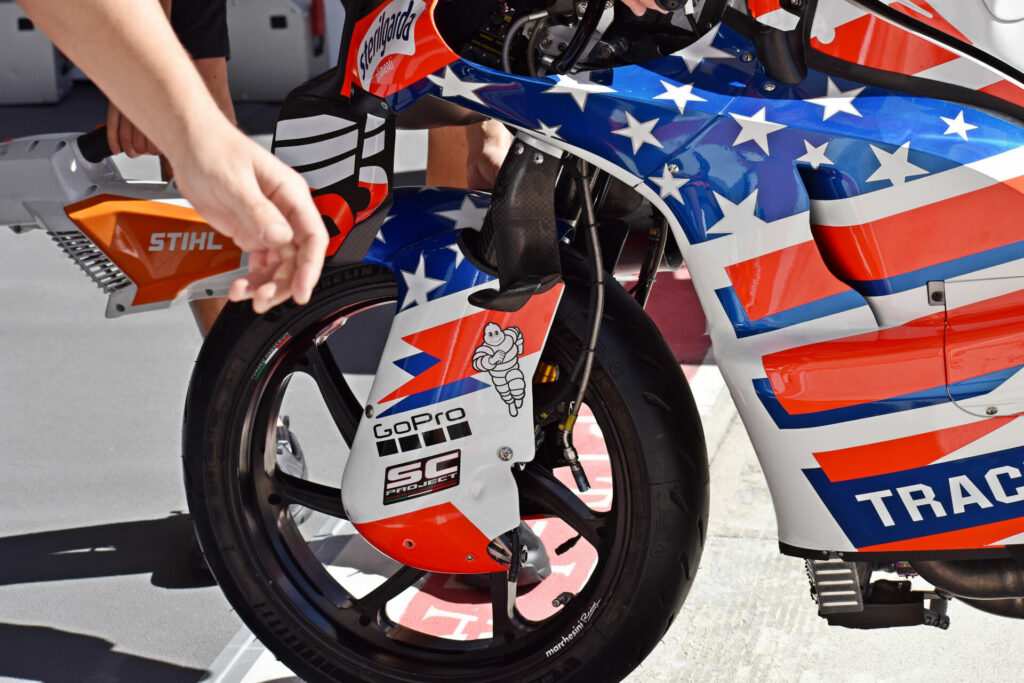
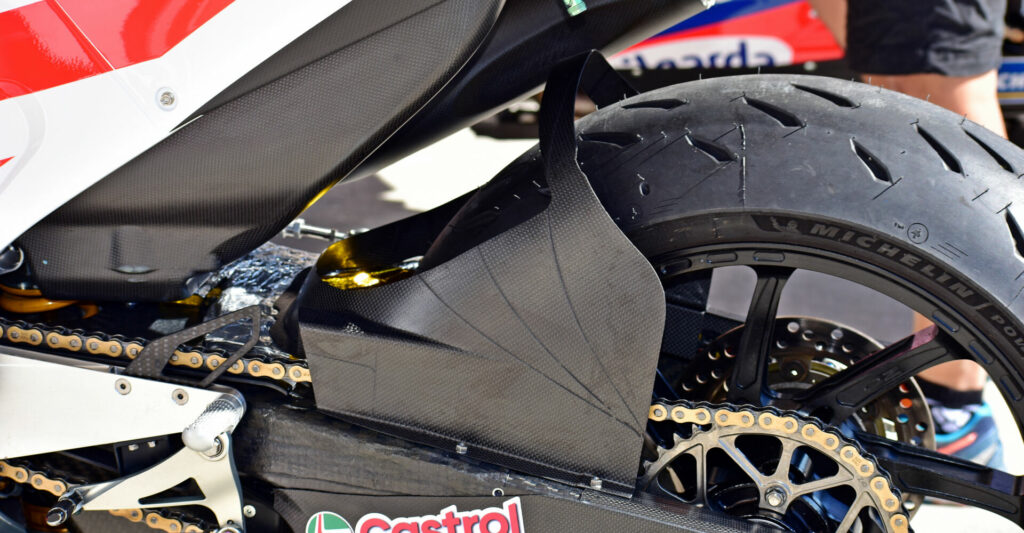
KTM continued working on the central part of the main fairing, all the way back to the rider. That region also presents challenges to the engineers as they try to keep the airflow attached to the bodywork, which reduces turbulence and therefore drag.
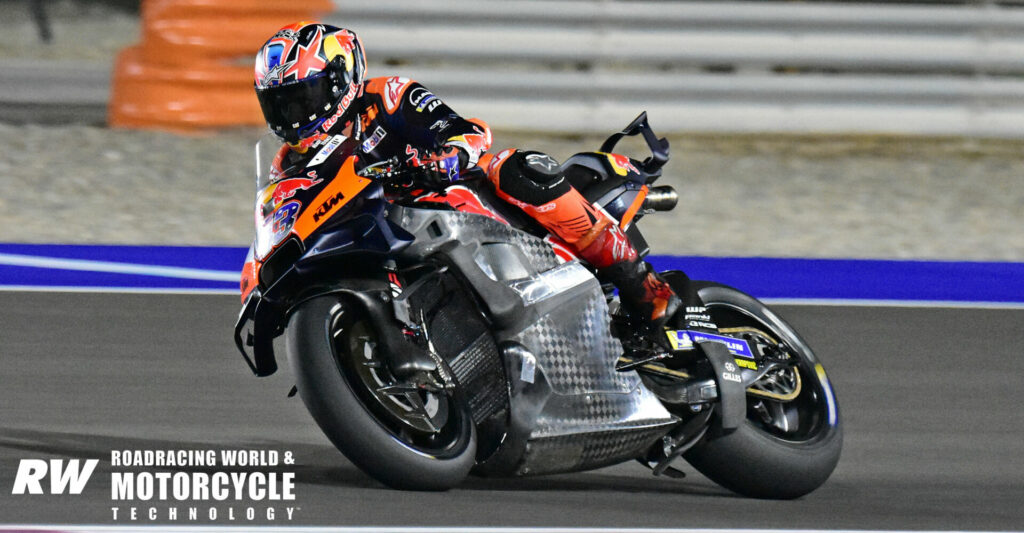
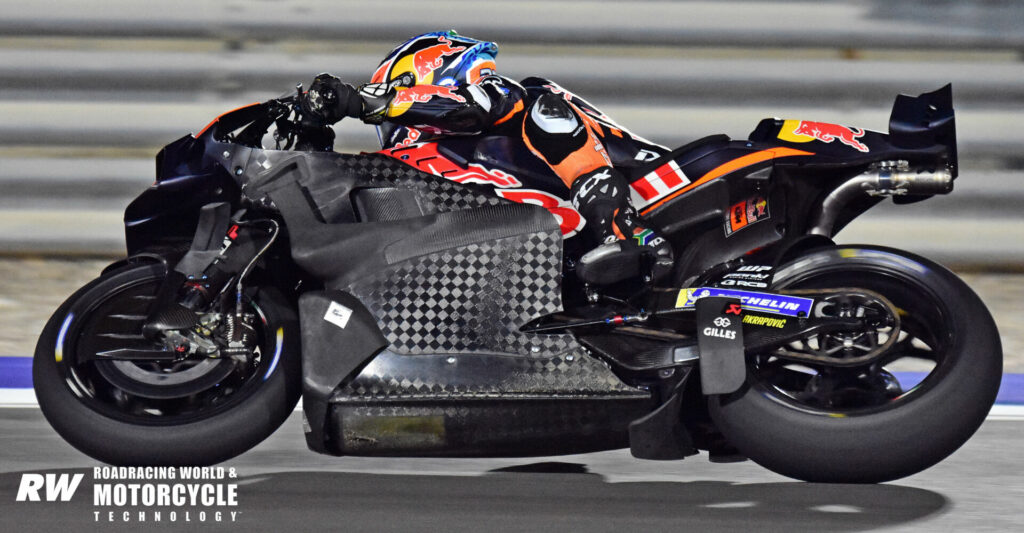
Ducati’s new GP2024 fairing tries to manage the chaotic airflow between the front wheel and the bottom of the fairing, which it has done with ducting in the past, and still take advantage of the venturi effect with a carefully shaped fairing lower mid-section. Compare the GP24 and GP23 shots below, and it is easy to see that Ducati has bulged the fairing outward significantly. The slits in the horizontal part of the fairing suggest that Ducati is also carefully managing airflow inside of the fairing, but it is not clear whether that is for downforce, drag reduction or cooling.
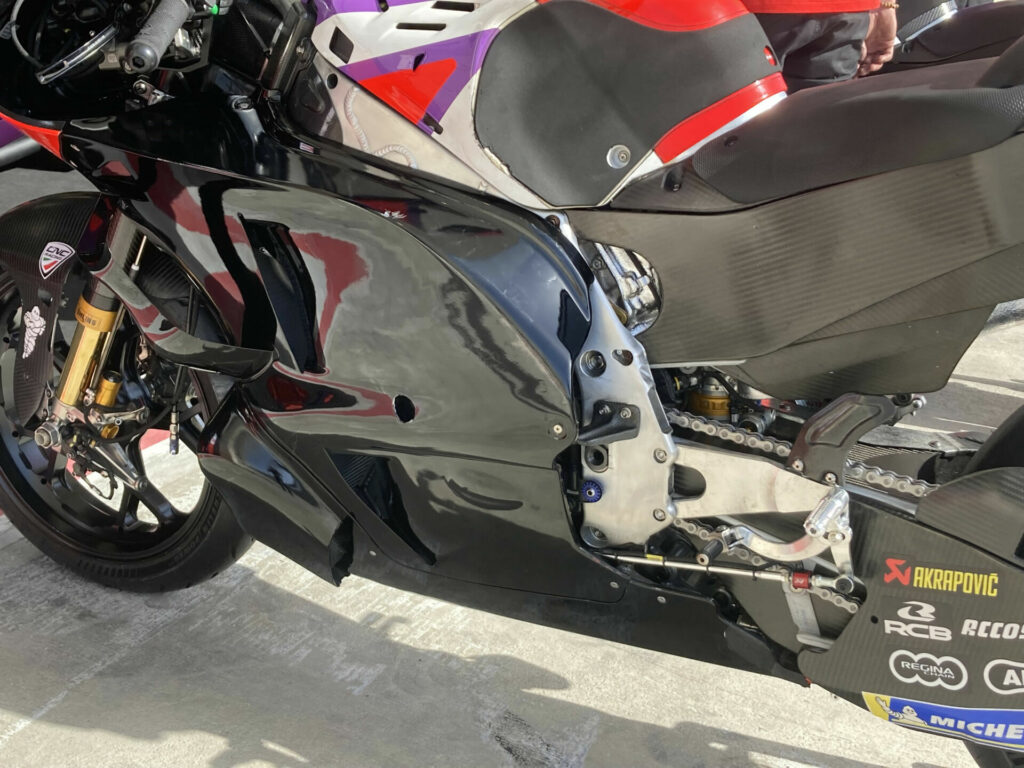
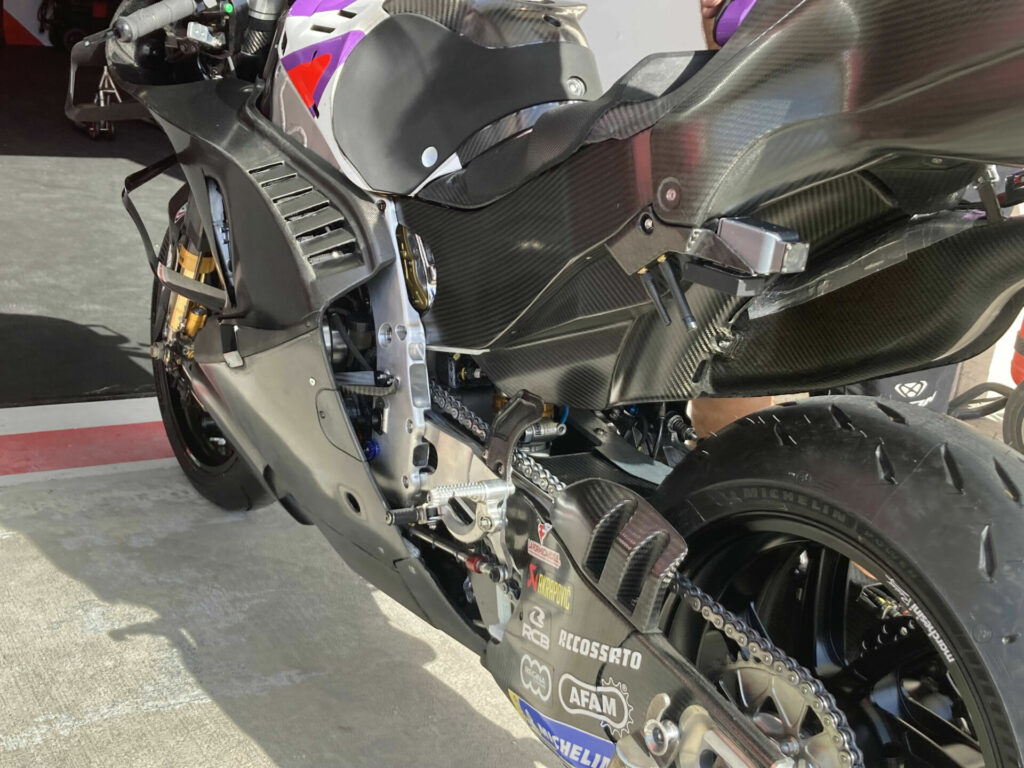
Honda’s riders complained about rear grip at corner exit, so the company responded with one of the most complex wing systems seen on a MotoGP machine to date. All of the RC213V machines tested the device, which features six vertical elements and two wings.
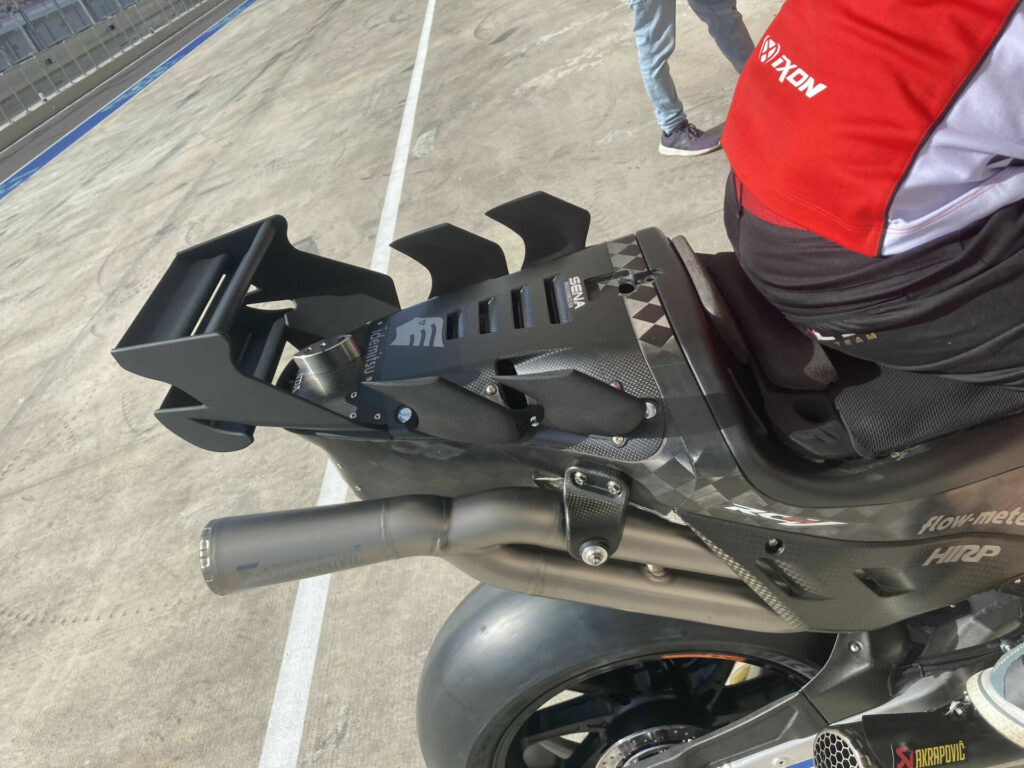
Yamaha tried a new exhaust system, a new tail section and various forms of aerodynamic aids at the front of the fairing. When mechanics would warm up the bikes, the fairings actually were free of ducting there, suggesting that the company was bolting on several different ducts during testing. Yamaha is the only company that does not appear to be looking for mid-corner downforce via the venturi effect created by the “fat” fairing design.
